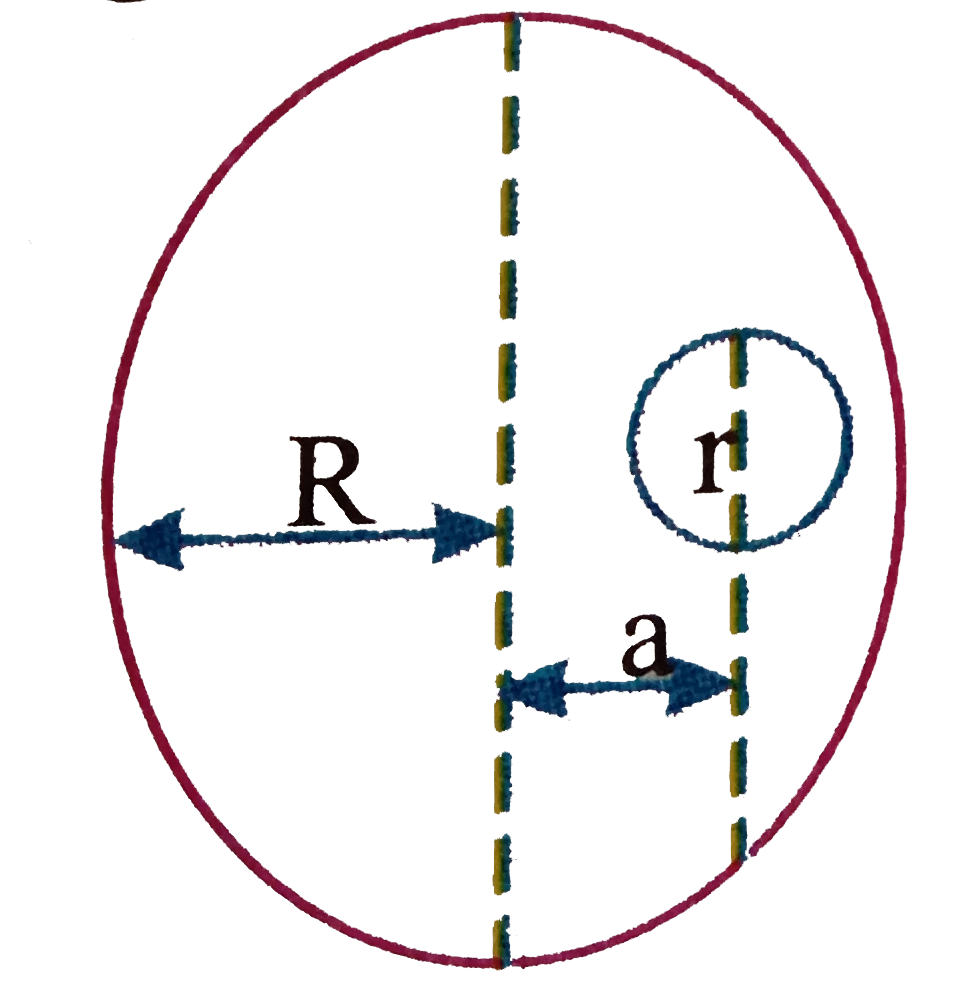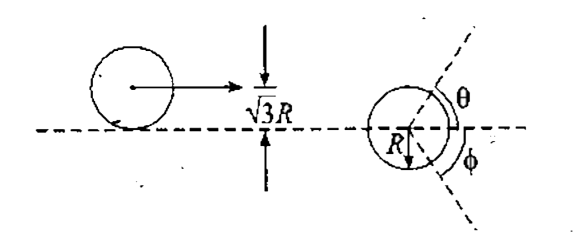A copper disk of r0=20cm radius revolves in a vertical plane at 3000 r.p.m. One contact from a sensitive galvanometer is connected to the disk's axis, the other by means of a mercury contact to the outer edge of the disk (Fig.) Find the voltage.
Will the galvanometer pointer point in another direction, if the direction of rotation of the disk is changed?
The Earth's magnetic field is compensated.

The correct Answer is:1.1×10−8V; will not change
Classical Electron Theory 31.2. Here the centrifugal force of inertia, Icf==mω2r, where r is the distance from the appropriate point of the conductor to the centre of the disk is the non-electrical force acting on the disk. The strength of this force field is
E∗=Icfe=mω2re
The induced c.m.f. may be found either graphically (Fig.), or by integration:

=mω2e∫r00rdr=mω2r202e

Similar Questions
Knowledge Check
- Question 1 - Select One
Where is the disk placed in a computer?
AIn the modemBIn the hard driveCInto the CPUDIn the disk drive - Question 2 - Select One
A positively charged disk is rotated clockwise as shown in Fig. The direction of hte magnetic field at a point A in the plane of the disk is
A⊗(into the page)B3/4→C←3/4D⊙ (out of the page) - Question 3 - Select One
A copper disk of radius 0.1m is rotated about its center with 200 rev/s in uniform magnetic field. Induced emf across the radius of the disc is:
Aπ20VBπ100VC20πmVD0
Charged Disk
View SolutionA disk rotstes at 70 r.p.m. in a horizontal plane. How would you place an object on the disk so that it would remain on it? The coefficient of static friction between the object and the disk is μstat=0.44.
View SolutionA circular hole of radius r is made in a disk of radius R and of uniform thickness at a distance a from the centre of the disk. The distance of the new centre of mass from the original centre of mass is
 View Solution
View SolutionA circular disk of radius 0.010 m rotates with a constant angular speed of 5.0 rev/s. What is the acceleration of a point on the edge of the disk?
View SolutionA disk moving on a frictionless horizontal table collides elastically y with another identical disk as shown. The directions of motion of the two disks make angles 0 and ϕ with the initial line of motion as shown. Then
 View Solution
View Solution

